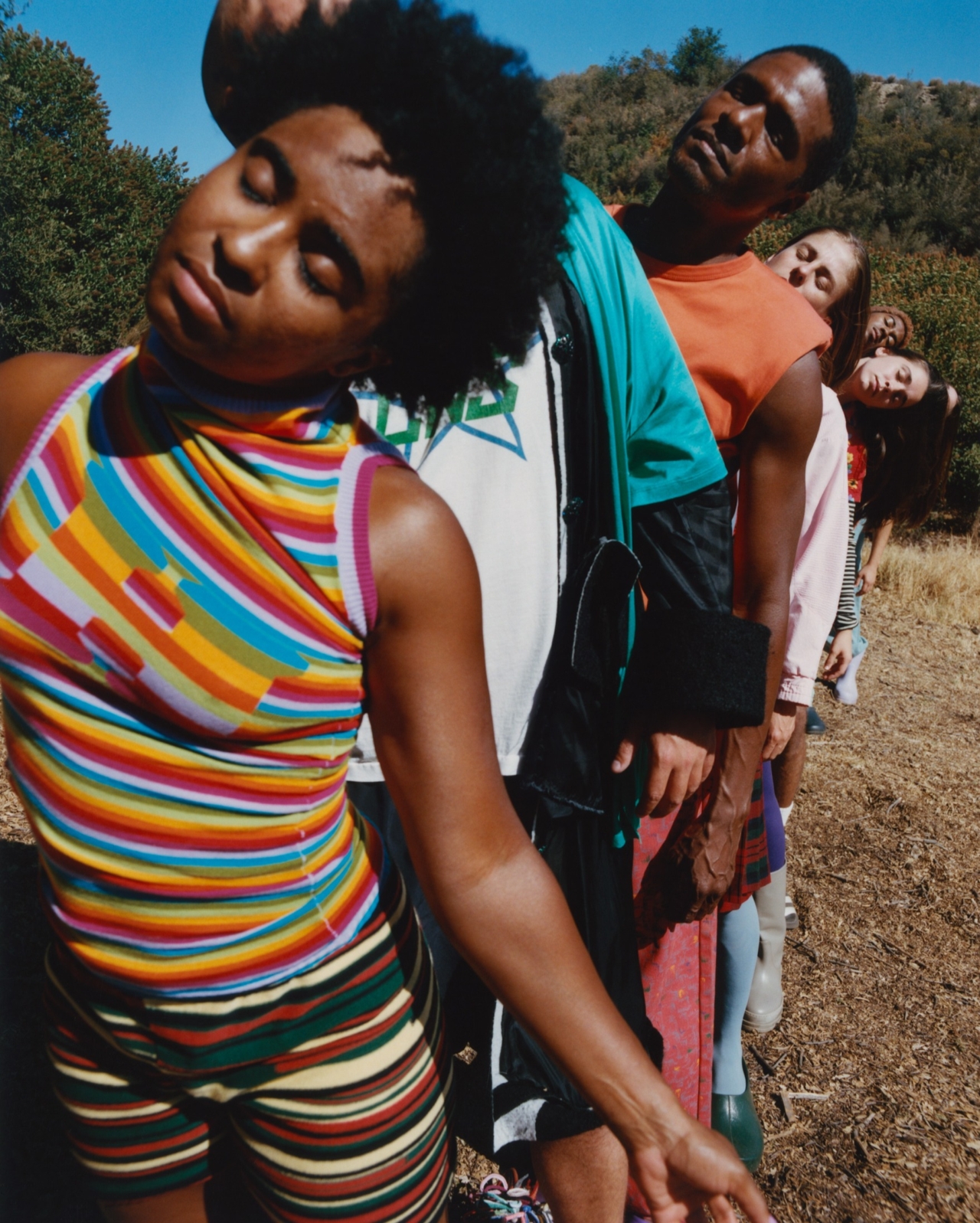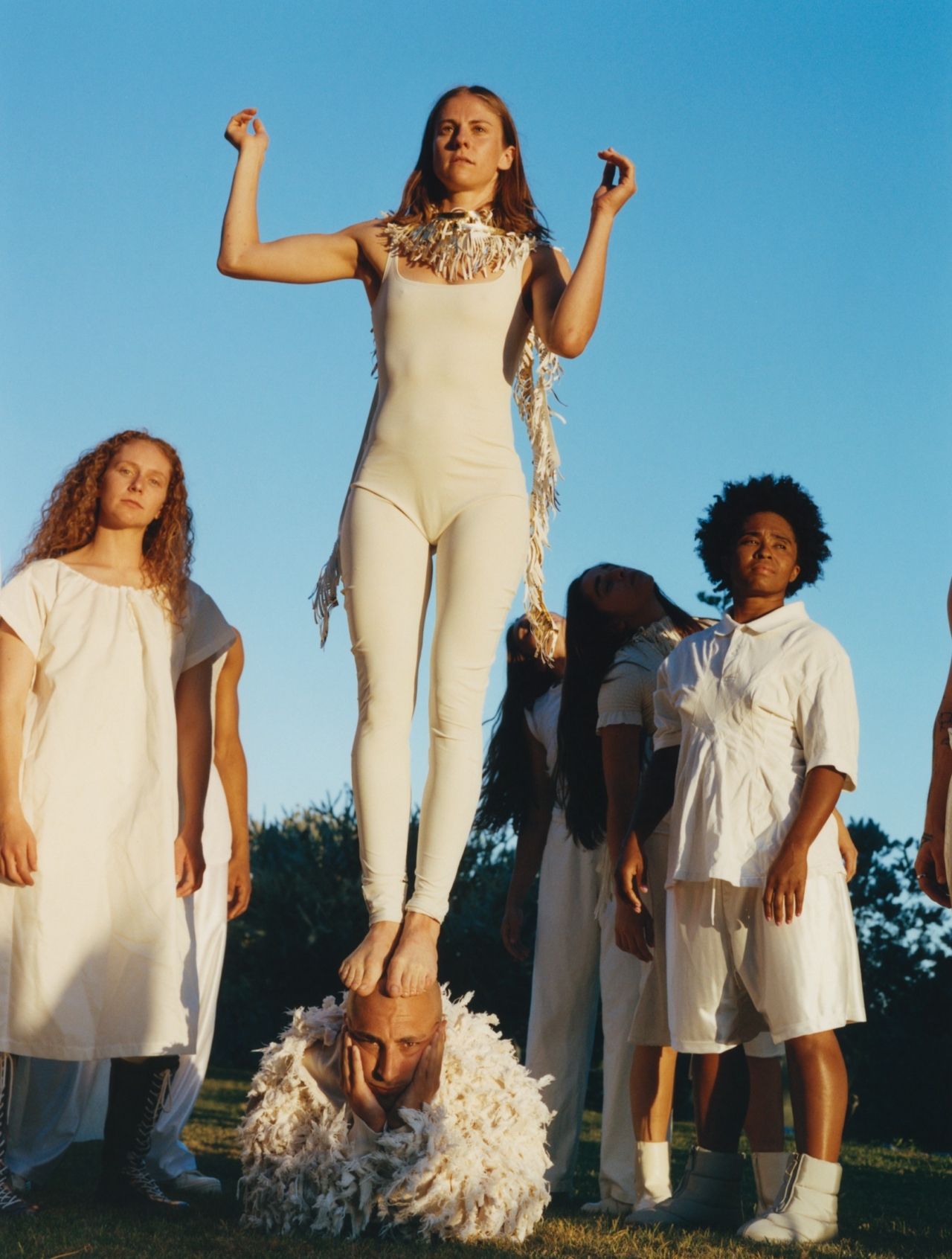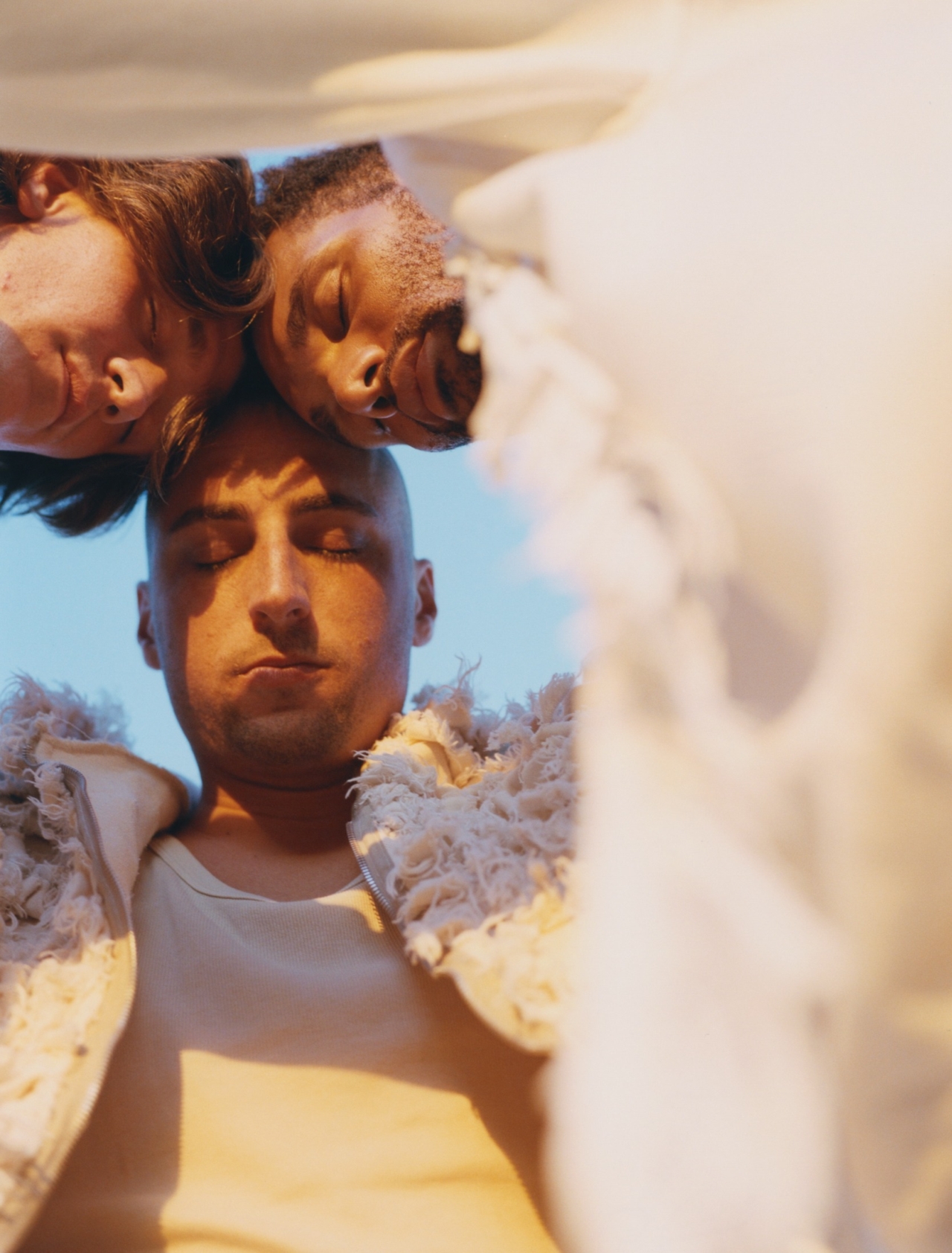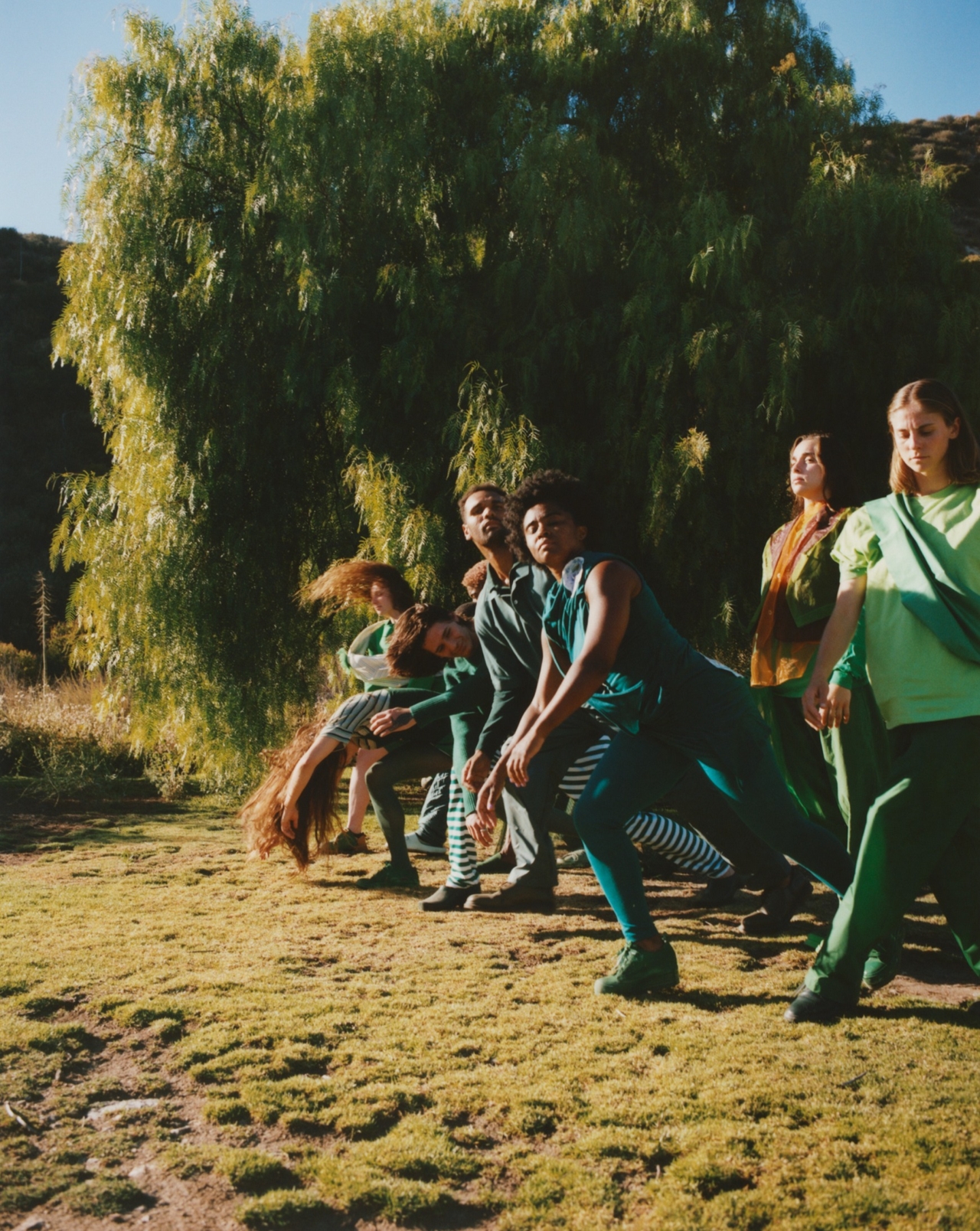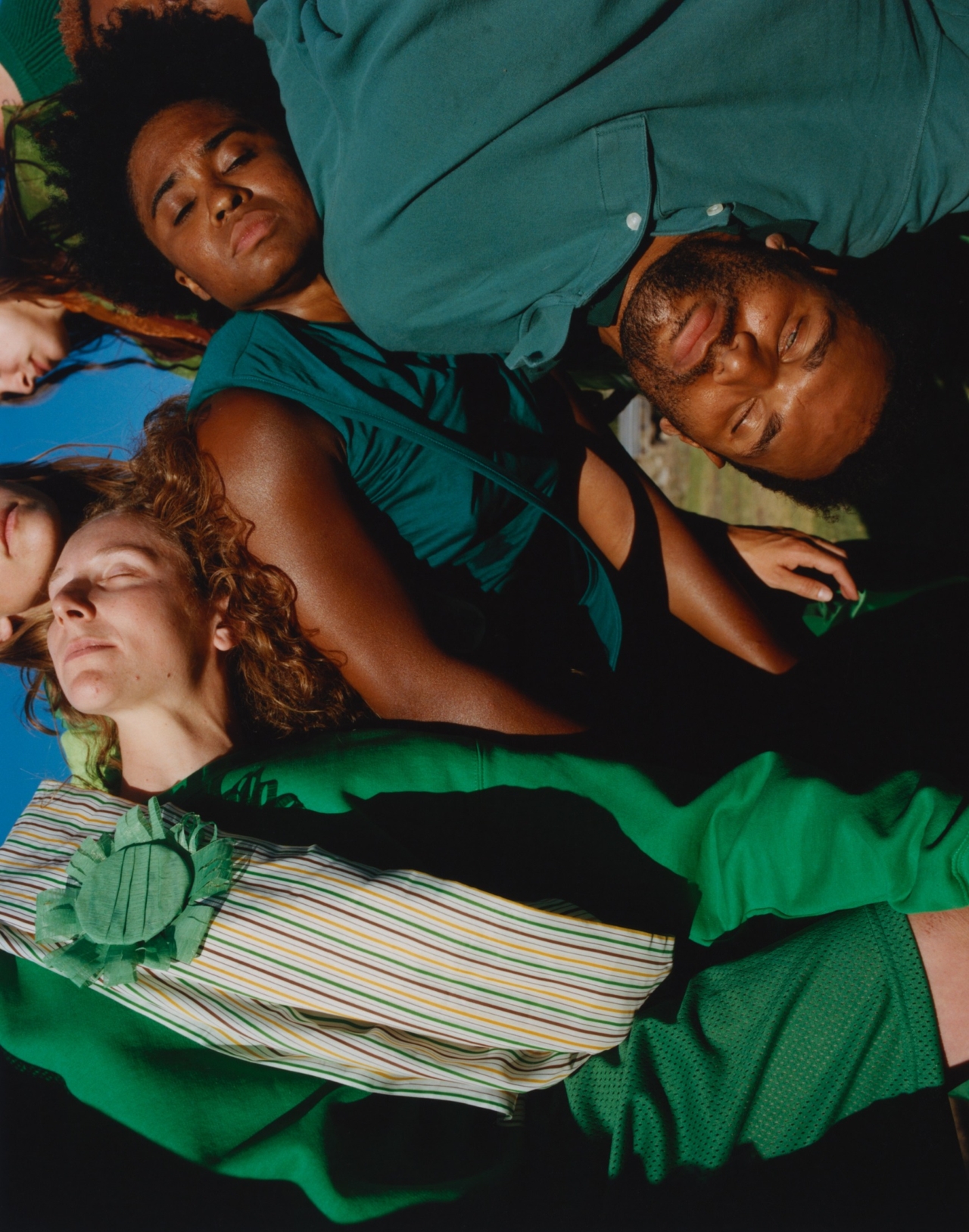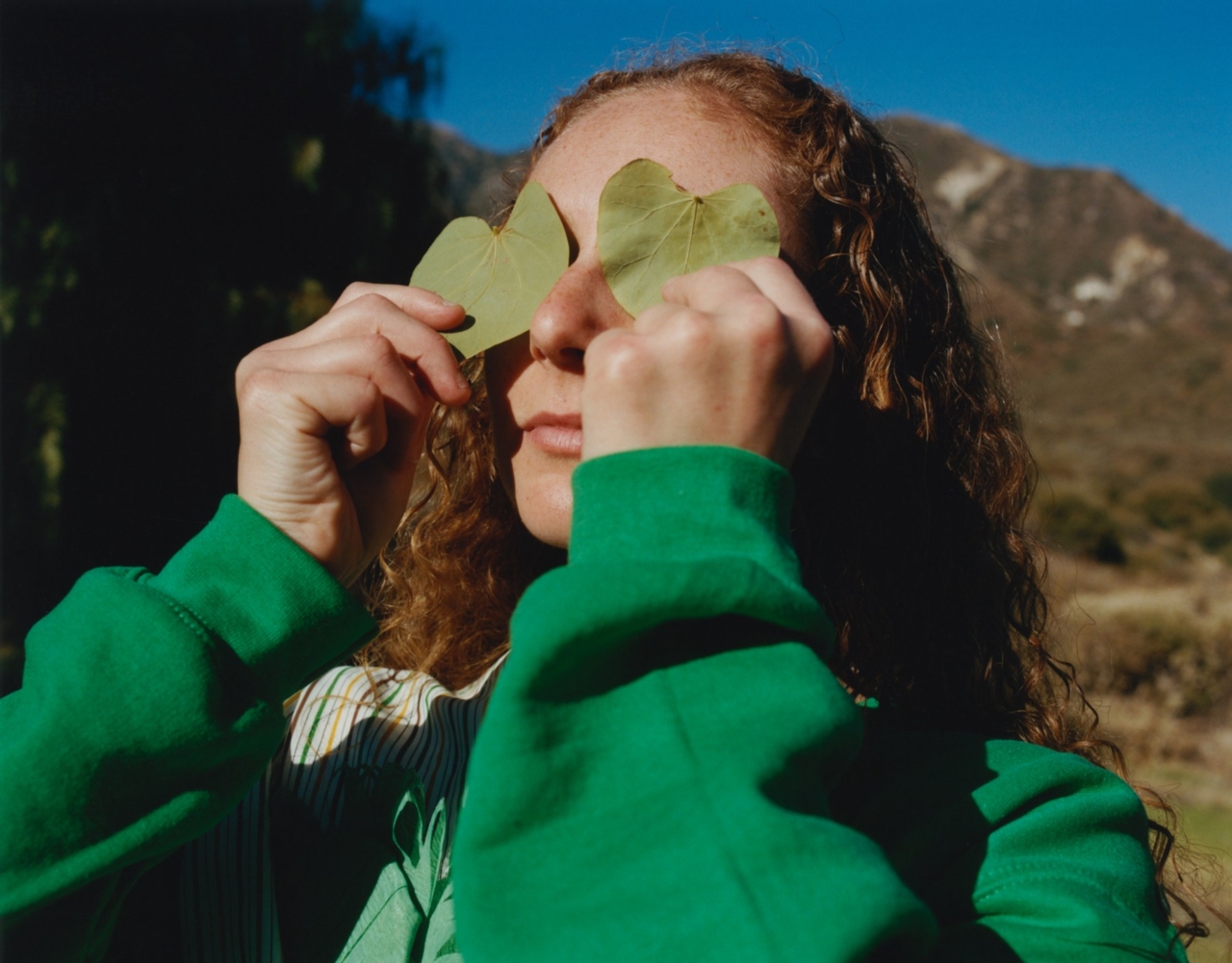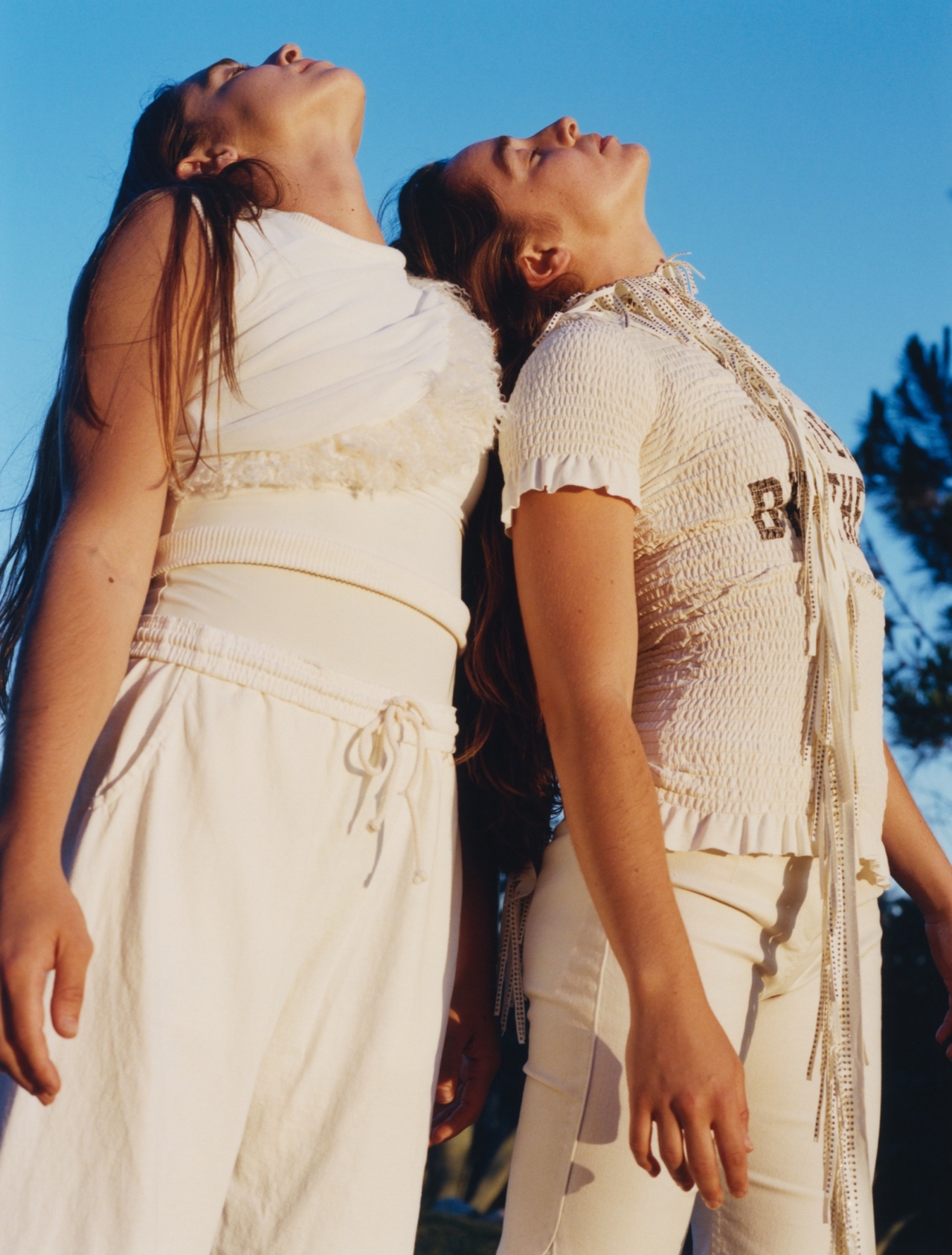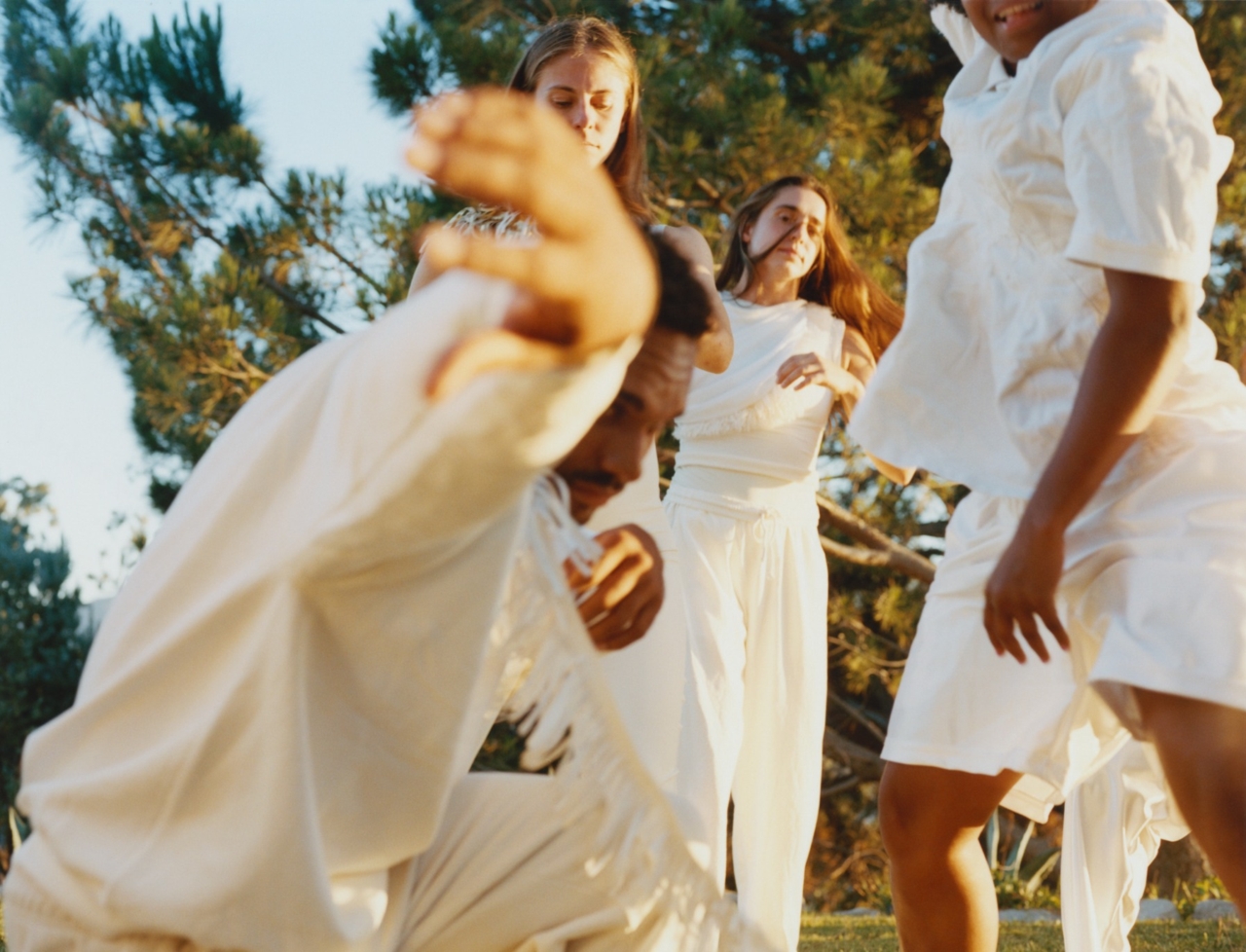
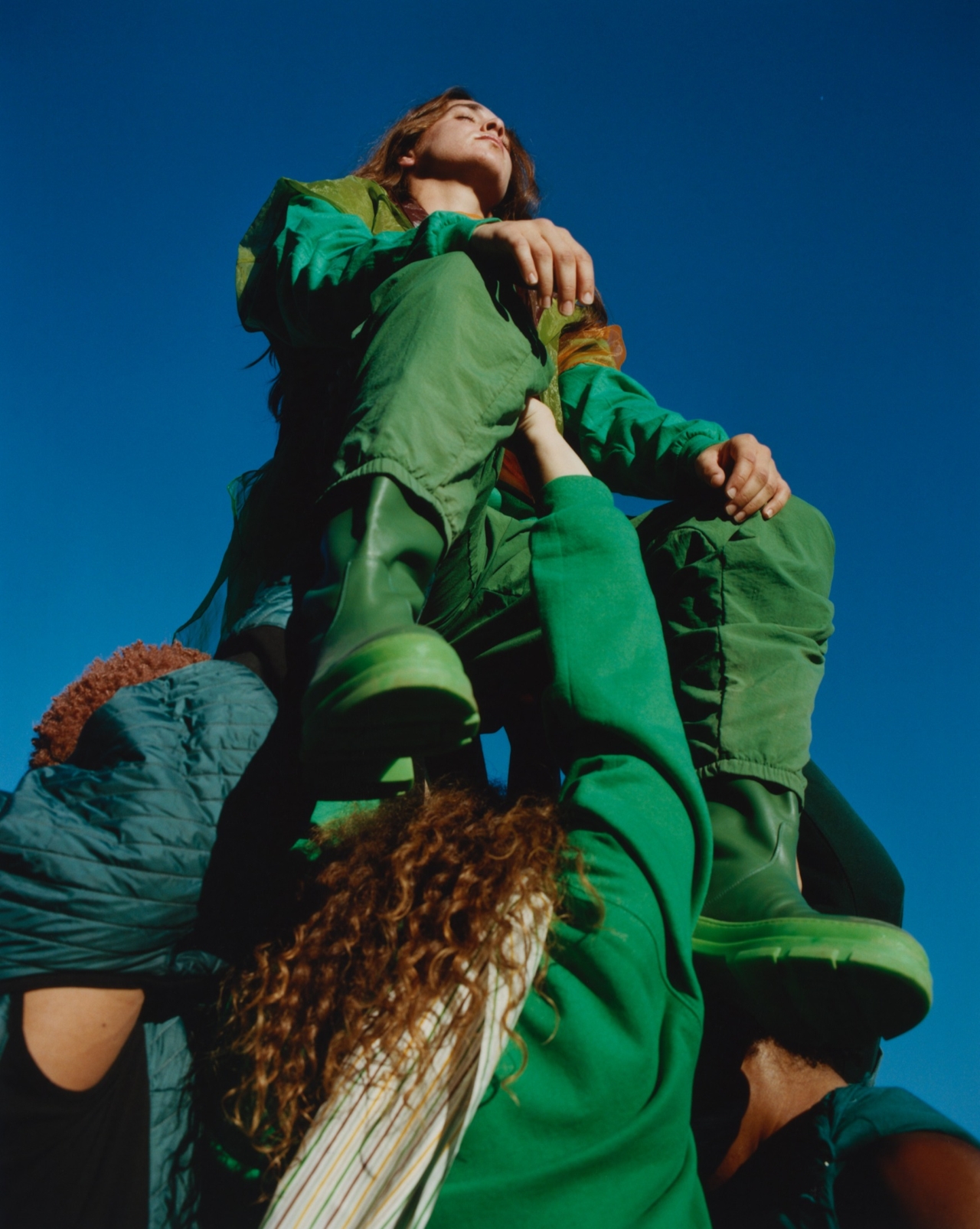
Dance was never something Jacob Jonas wanted to pursue for fame or recognition. It was, from the beginning, a means of healing. Through what he describes as a somatic practice, dance has allowed Jonas to release what is stored within his body, an approach that deepened after surviving cancer. While in the hospital, he’d listen to the sounds of nature— rainfall, ocean tides, and forests—to help him into a meditative state.
Now, through his dance nonprofit Jacob Jonas The Company, he channels that same grounding into his choreography. Somatic movements become percussive slams, meant to echo the rain and forest sounds he heard during treatment. The result is a sensory landscape offering dancers and audiences their own moments of release and feelings of serenity.
For Jonas, dance has been a pathway to bodily healing. And if our bodies are inextricably connected to the Earth, mirroring its rhythms and resilience, then perhaps tending to the body is also a way of tending to our relationship with the planet.
These photographs, which Clara Balzary captured of dancers from Jacob Jonas The Company, first appeared in Atmos Volume 12: Pollinate. The images trace that flow between body and nature. Below, Jonas sits down with Atmos to discuss movement, illness, and the natural forces that help us heal.

Jasmine Hardy
First, I’d love to begin by talking about your personal relationship with dance and movement, especially as it relates to your place in the natural world.
Jacob Jonas
I started dancing at a young age, 13. I got into it to build a sense of family. There were some street performers at Venice Beach that were doing it, and so I started performing with them and got into different street dance practices, and it became a bit of a therapy for me. As for how it relates to the natural world, I guess it’s a sense of building family and community and also responding to nature. Nature is used as a big inspiration for a lot of the themes that I work with and also, randomness as well, just within the process that I use now. I use randomness a lot within the compositions of work, the dancers that I’m working with. Just building compositions based off of randomness.

Jasmine
Nature is also one of the themes in a memoir you have coming out soon, which chronicles your experience battling cancer. Do you want to speak a little bit more about it and how it intersects health with art and nature?
Jacob
Yes, we’re releasing a book called Cemented Beauty. A few people throughout my process of battling cancer asked me what the process was like being on chemotherapy, and oftentimes I said it felt like concrete, that everything was very heavy, but the whole process itself was very beautiful. I had two close friends pass away through illness, one from cystic fibrosis and one through colon cancer. One of them journaled throughout their illness, and the other took daily self-portraits. And so when I was diagnosed, I spoke to the mother of one of my friends, and she said, “Just document everything and you never know what you might want to do with it,” and so I was inspired to take these daily self-portraits and also journal.
And after a year, I organized it all together and turned it into this book. I’m very fortunate to have it be co-published by Atelier Éditions, who have also published the works of John Cage and his projects on foraging and fungi, and a lot of different other projects around nature and heliotherapy, the studies of the sun, so it was very in line with the themes that we’re exploring. Overall, the book just kind of chronicles the ups and downs on the arc of going through illness and questioning one’s mortality, and just all the things that kind of go with the decline and the recovery of help.

Jasmine
I know you’ve referred to the body as a site of conflict and resilience and renewal, and that idea made me think about how Earth has had similar experiences of hardship and redemption. I’m curious if you see any other parallels between the human body and the Earth, and how that’s reflected in your work.
Jacob
I think about the word “natural disaster,” and how they’re unpredictable. Things just happen, they form, and we respond to them. And sometimes people and places and environments are left behind, and it gives you the opportunity to rebuild or grieve. But also, when you think about war and conflict, and you think about individuals, if you think about the millions or hundreds of thousands of people that are actually in conflict psychologically or physically, it’s very similar to our cells within our body. And sometimes our cells can battle the good from the bad, and sometimes the bad takes over, and I think that’s essentially what chronic illness or cancer can be.
I think on a very micro level, conflict, pain, war, these things are happening within our body and our mind constantly. That’s something I’ve been reflecting on a lot: What does health mean on an individual level? But on a global level, these little specs are kind of everywhere within our body as people, as stars. It’s all very similar. And kind of the larger ecosystem of it all—I guess the only way to survive is if everything is working together as opposed to working against each other.


Jasmine
Yes, everything is interconnected. As you know, our theme for the issue is Pollinate, and I think the word typically brings forth images of flowers and insects. But I’d like to know if you see our bodies as pollinators and how you factored the concept of pollination into your approach in this Atmos piece.
Jacob
I think it’s the spreading of, it’s enriching, it’s nourishing, it’s guiding in many ways. And it also coexists with sunlight, with water, with these very basic things. You said interconnected. It’s a very important word. Another thing that I’ve been thinking a lot about is fungi and mycelial networks. These things are kind of happening underground as well. I think pollination in many ways is what’s happening in front of us, but also what’s happening energetically underneath us and spiritually. Just these guides, and it’s far beyond our control. The word “control” has been coming up a lot for me on a personal level and also on a natural level. And I think illness and health and nature, when you surrender to what’s much bigger than you, you realize you’re not really in control of much.
Jasmine
Do you want to speak a bit more about how you went about this shoot and how it all came together?
Jacob
The dancers in the piece are part of my organization, my nonprofit organization, Jacob Jonas The Company, and they’re all artists that I collaborate with frequently. And they’re diverse in background. Most dance companies traditionally all dance a similar style, but our dancers are diverse in their backgrounds. Some are street dancers. Some are contemporary ballet dancers. Some are yogis and parkour artists. So their movement practices are all very different, but energetically there’s a sense of family and community amongst all of us, so it was a collection of some of the artists within my company. Working with Clara [Balzary] was amazing. She’s a remarkable photographer. We went close to her home and got to shoot in natural environments, and worked with a great stylist who provided all the clothing ideas. It was a very collaborative environment.

Jasmine
Beautiful. What’s your general process when it comes to choreographing a piece, and how might it change depending on what you’re trying to convey?
Jacob
I tend to be inspired by a natural theme. Recent themes include waves crashing in the ocean or randomness within nature, studies of the sun, or fungi. So it’s either that or it’s things that are autobiographic, embodying pain or trauma, or things of my childhood, or things within society that I want to challenge or organize better within myself. So typically, it’s identifying a theme and then doing a bit of movement research to figure out what vocabulary movements I want to stay within and create rules. And then once that’s there, I start to invite collaborators through dance, through music and clothing and sonography, and then kind of allow this communication of response to create something new and just allow the process to reveal itself.

Jasmine
At Atmos, we really believe in the art of storytelling to spark change. For us, it’s typically through writing and visual art, but of course, as you describe it, performance art and dance are other forms of storytelling. I’m curious what stories you hope to convey through your pieces.
Jacob
I think of the words “life force,” “bloodline,” “pain,” “love,” the deepest parts of our humanity, and I think artists have the ability to be vulnerable in such a way that we can share the deepest parts of ourselves through our imagination. And if the everyday person who isn’t expressing themselves in a similar way gets to glean more insight into themselves or to their world through other people’s vulnerabilities, then I think that’s the goal is just to understand ourselves a little bit more through our imagination and vulnerabilities.

Jasmine
100%, I think that sharing these parts of ourselves can be transformative for others. Do you think dance and movement, and sharing yourself in that way, can also serve as a climate solution?
Jacob
Everything’s moving, right? I guess we’re all dancers whether we call ourselves or not, but I think the climate is moving, the temperatures are changing. I think everything continues to move, and so we can continue to move with it or to move against it. The dance is always happening. So, I would say absolutely.

Editor’s Note: This interview has been edited and condensed for length and clarity .
This story first appeared in Atmos Volume 12: Pollinate with the headline, “Pollinator’s Dance.”
Jacob Jonas on the Choreography of Healing and Taking Cues From Nature

